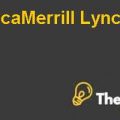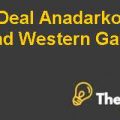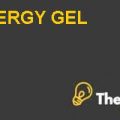Problem Statement
The case “Cooley Distillery: The Independent Spirit of Ireland” is basically a story of Cooley Distillery which is the only independent Irish owned distiller of Irish whiskey in the world. The company has been facing severe stiff and rigorous competition for the past twenty five years and has been a part of the monopolistic Irish whiskey market and the global spirit industry. Moreover, the company has been able to earn reasonable profits and has been able to achieve stellar reputation for the innovation and the quality Cooley Distillery has been offering. Along with this, the company has been a niche player in the market.
The company is a non-listed organization where it has 290 shareholders who have never been given a dividend for a long time. With such intense competition in the market, the chairman and founder of Cooley Distillery, John Teeling who owns more than 36% of the outstanding stocks has been looking for various strategic options which shall help the company expand and grow in the future. The four options indicated in the case are continuing to do it alone, a joint venture with another firm, selling out to a larger multinational player and taking the company private in a management buy-out.
EXTERNAL ANALYSIS
Porter’s five forces model
Bargaining Power of Supplier: Low
The bargaining power of suppliers in the industry is low. The reason is simple; the numbers of suppliers in the global spirits industry are high. Moreover, the different suppliers look to offer economies of scale in order to increase their sales and attract customers. Moreover, another reason it is low because the suppliers do not have control over the product offerings which generally does not allow the suppliers to enforce their prices.
Bargaining Power of Buyers: High
The bargaining power of buyers is high for the industry. The reason it is high because the industry has many competitors which are offering high quality products which makes it difficult for them to differentiate with the competitors. Moreover, the prices are also low for the products in the industry and the switching cost is also low. Along with this, the number of options available in the market makes it difficult for the players to compete.
Threat of New Entrants: Low
The threat of new entrants in the industry is low. The reason it is low because of the high capital investment that is required to enter the industry. Along with this, it takes almost three years to produce anything that can be sale able. Moreover, the government restrictions and the laws that have to be followed in the industry are quite stiff and challenging which makes it difficult to compete in the market.
Competitive Rivalry: High
The competitive rivalry for the industry is quite high. The reason it is high because of the number of rivals that are already present in the market. For instance, the major players in the market are Diageo plc, Pernod Ricard Group, William Grant & Sons, Ltd, Sidney Frank Importing, etc.
Threat of substitutes: Moderate
The threat of substitutes for the industry is moderate. The reason is simple; the alternates for substitutes are quite large in number. For instance, the substitutes which are available in the market are soft carbonated drinks, juices, beer, etc. All these products are actually direct substitutes for the existing industry products.
Cooley Distillery The Independent Spirit Of Ireland Case Solution
Competitor Analysis
The company Cooley Distillers has many competitors in the market. All the competitors pose severe threat to the company in different ways and manners. The major competitors in the Irish Whiskey Distillers are the Diageo plc, Pernod Ricard Group, William Grant & Sons, Ltd, and Sidney Frank Importing. Along with this, the many players that do not operate in the Irish whiskey market at the moment are, Beam Inc., Constellation Brands, Brown Forman, Bacardi Ltd., Remy Cointreau Group and the Davide Campari Milano S.p.A.
The most successful and the largest competitor in the market is Diageo Plc which is the largest spirits company headquarters in London.The total sales for the company in the year 2010 have been $15.9 billion and the overall profits have been $2 billion approximately.
Second in line is the Pernod Ricard Group that accumulates total sales of $11 billion and the profits for the company has been $1.6 billion in the year 2010.The third most successful competitor in the market is William Grant & Sons, Ltd. the company is a Scotch based firm that has become quite successful in the industry...................
This is just a sample partial case solution. Please place the order on the website to order your own originally done case solution.










